Climbing Ayers Rock is so 20th century! Anyone in the know will tell you that the majestic beauty of Australia’s iconic monolith is best experienced from the vast plains surrounding it. Visitors explore Uluru – as it is known to the Indigenous Anangu people – on foot or from a camel’s back. From the desert floor the imposing rock, rising abruptly out of the desert, presents many different aspects; changing with the onlooker’s vantage point, but also with the time of day, the weather and seasons.
Light is an essential ingredient, which is why sunrise or sunset are the most popular times to view Uluru. When the oxidised sandstone is plunged into otherworldly shades of deep, warm red, the spectacle prompts a chorus of “Oohs” and “Aahs” from spellbound spectators – and since 2016, nature’s own light show is complemented with a manmade light installation. Unlike the sun’s daily performance, which is as old as the rock itself, Bruce Munro’s Field of Light Uluru is not forever. Like its natural counterpart, however, it has proven extremely popular, so its run has been extended through 2020, giving even more visitors the opportunity to witness both.
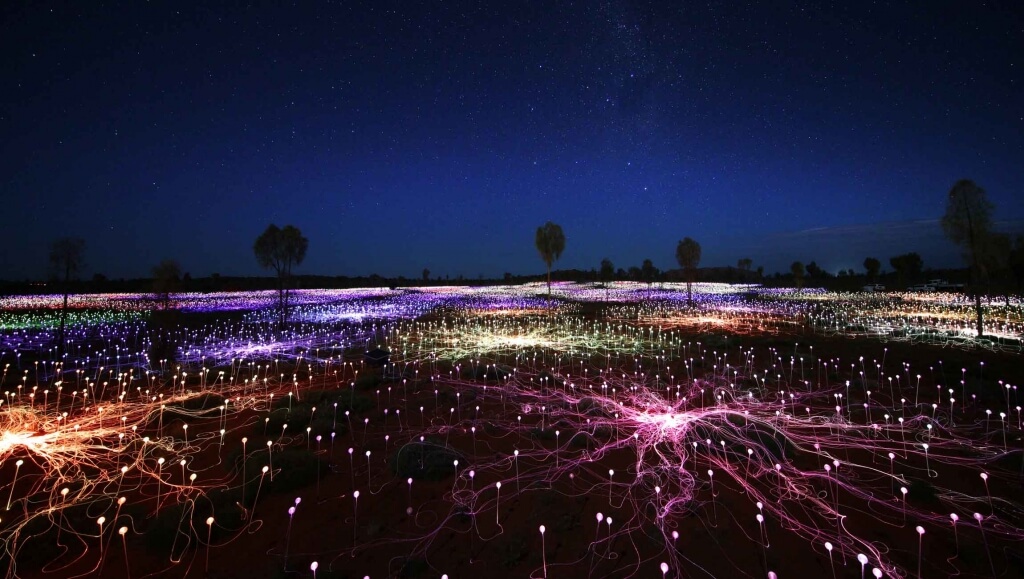
The award-winning installation enhances the sunset or sunrise experience and lights up the desert night with more than 50,000 solar-powered glass spheres. They glow in mesmerising colour patterns as the sun illuminates the rock beyond and continue to shine as the outback sky begins to fill with stars.
Much like the simultaneous natural light show, the experience is influenced by both external factors and personal perspective. To many, the harmonising lights resemble a sea of gently swaying wildflowers, others see a pulsating neuronal network, and some feel like they’re observing an alien species of fungi. Perhaps the name of the exhibition in the Aboriginal Pitjantjatjara languages sums it up best: Tili Wiru Tjuta Nyakutjaku simply means ‘looking at lots of beautiful lights.’
Visitors gaze across the field of lights from an elevated viewing area, wander among the tall stems and glowing orbs for a truly immersive view of the installation, or go on a guided camel ride on the surrounding dunes. Available packages begin with the basic Field of Light Pass, which allows access to the installation and offers ample selfie opportunities. For the most Instagram-able vantage point, opt for a Star Pass, which not only gives you additional access to the elevated viewing area, but also includes sparkling wine and canapés.
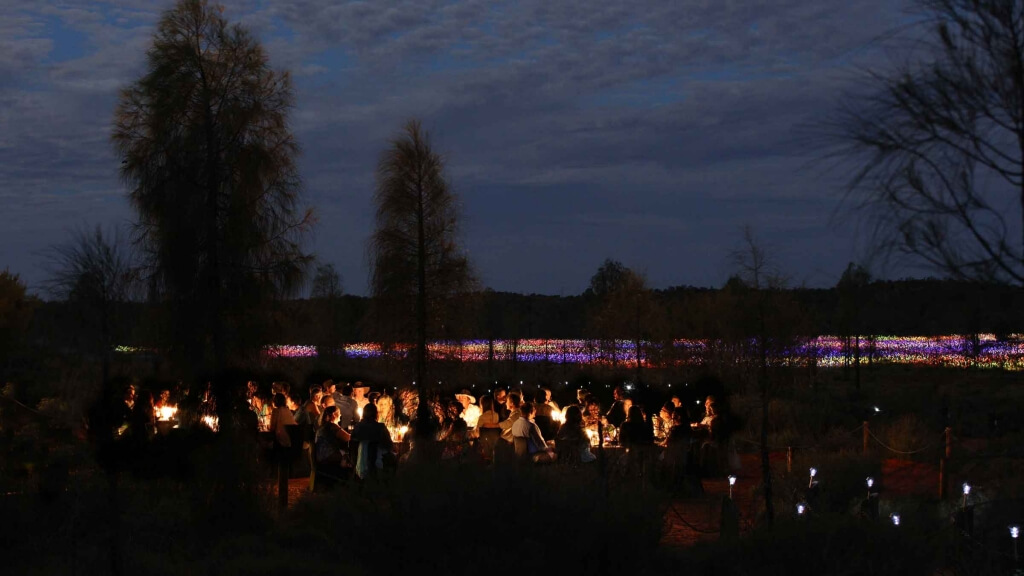
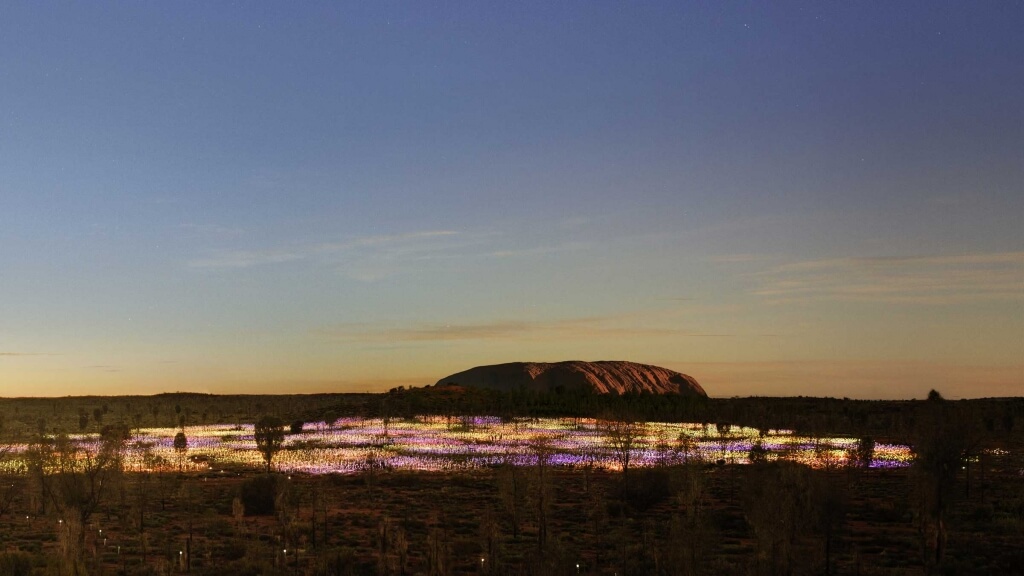
For a night to remember, foodies and hopeless romantics can splurge on the A Night at Field of Light dining experience, maximising the time spent admiring the installation, while enjoying a 3-course bush tucker inspired buffet menu and complimentary drinks. Optional extras like a fun camel ride or ultra-indulgent helicopter transfer take your adventure to the next level, while the Field of Light Sunrise offers an entirely different experience, as the sunlight slowly appears and the installation fades out.
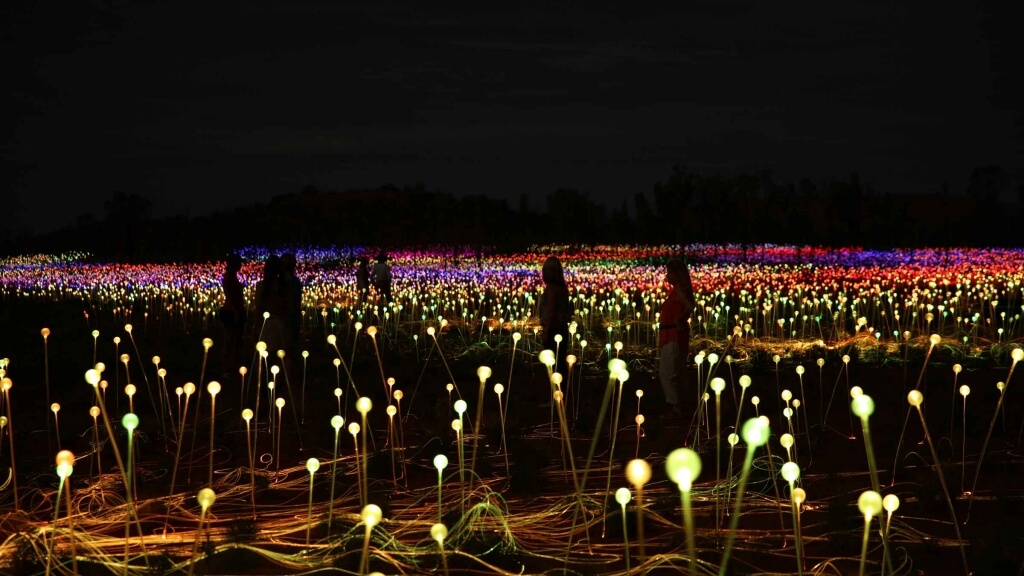
According to Ayers Rock Resort, where Field of Light Uluru is located, more than 200,000 guests have already enjoyed this unique, moving blend of natural beauty and artistic vision. Until the end of 2020, even more will have the opportunity to feel lit at the spiritual heart of Australia.
Find out more at www.ayersrockresort.com.au/fieldoflight
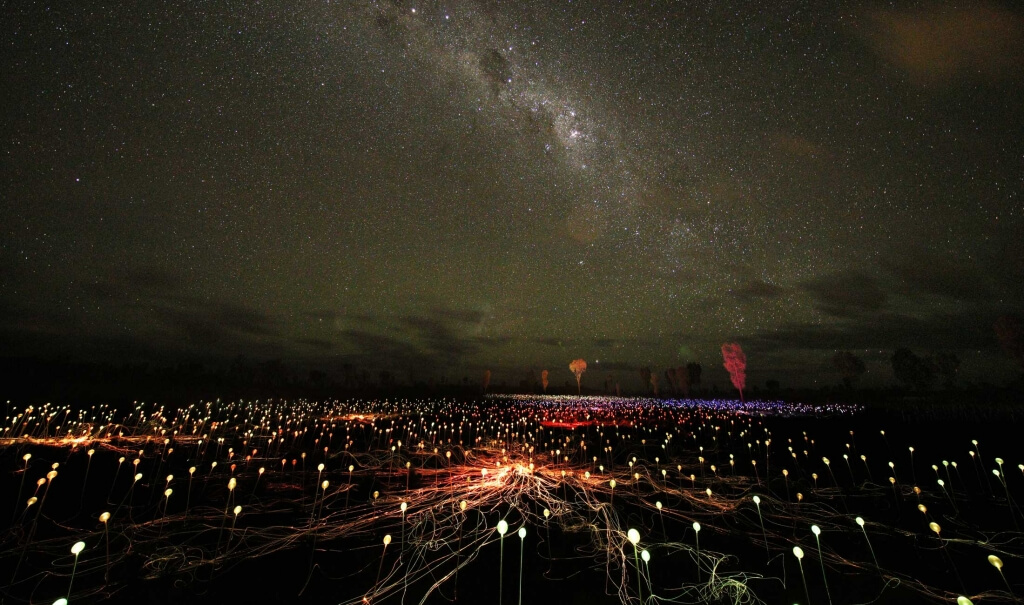

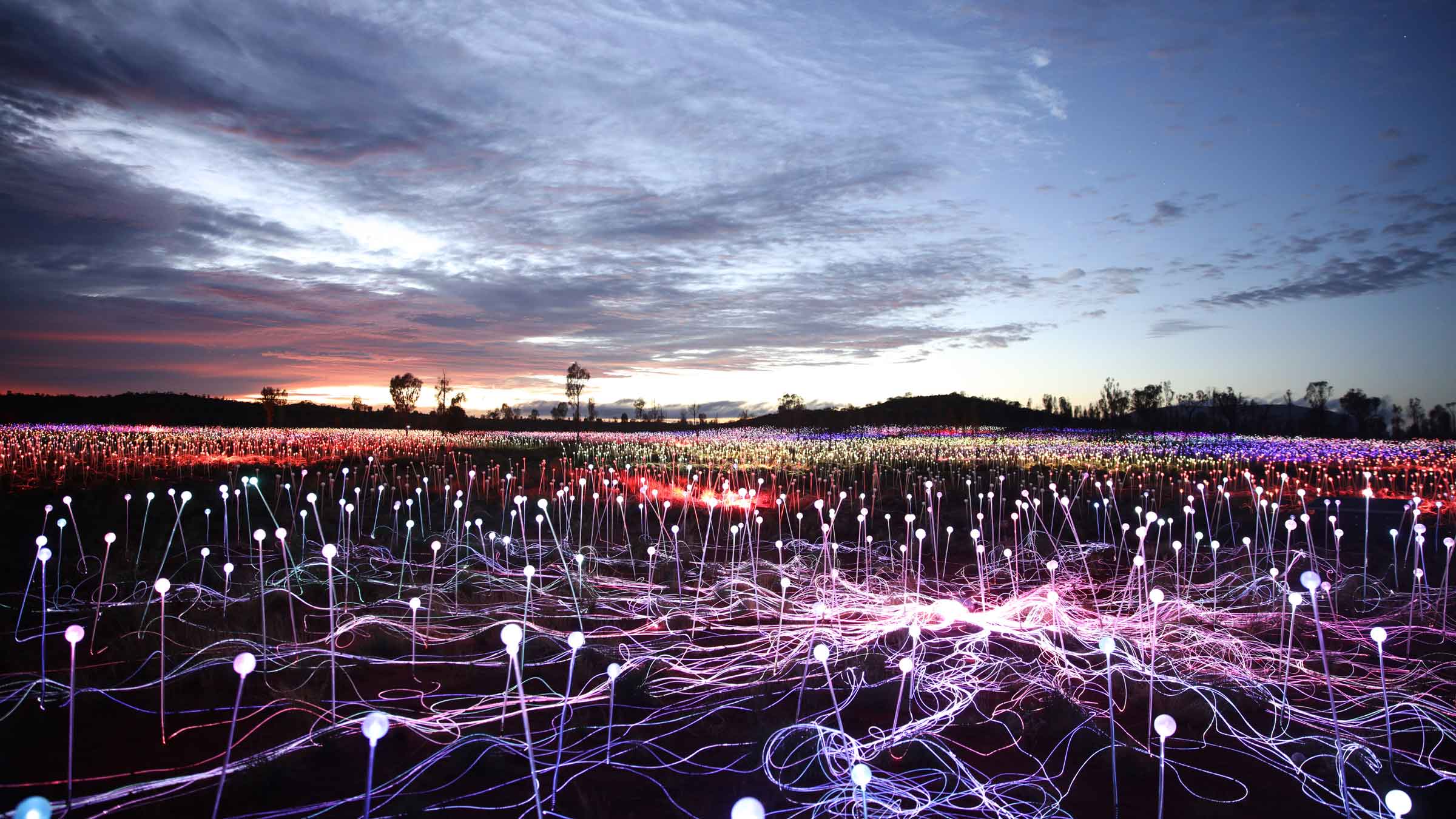









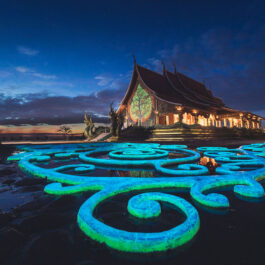


Sorry, the comment form is closed at this time.